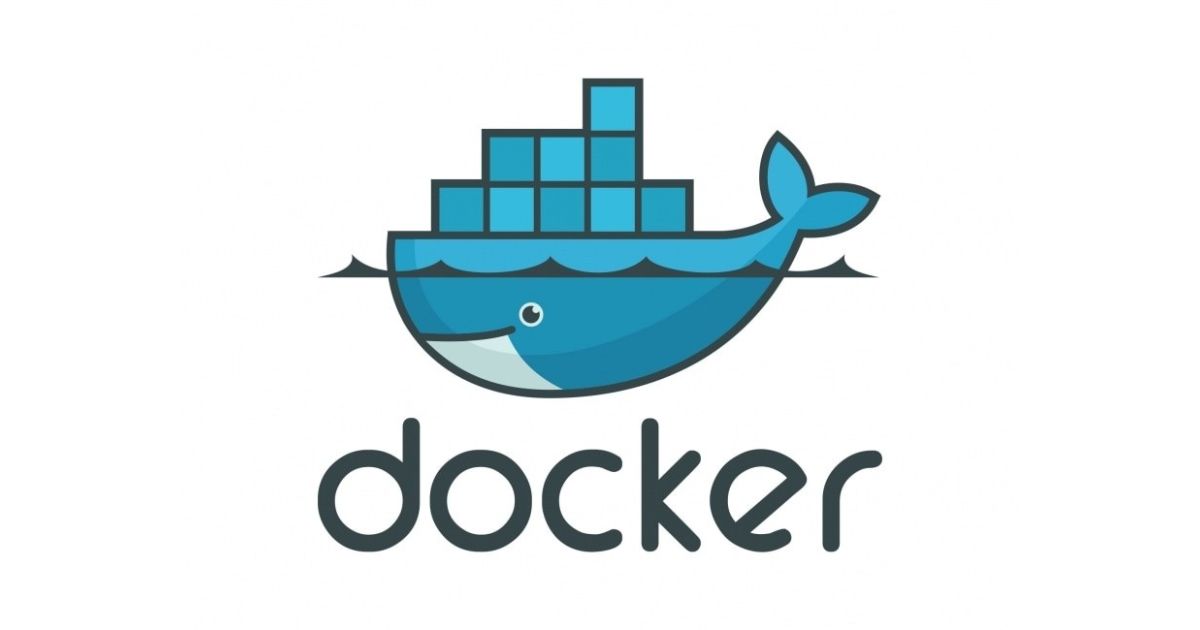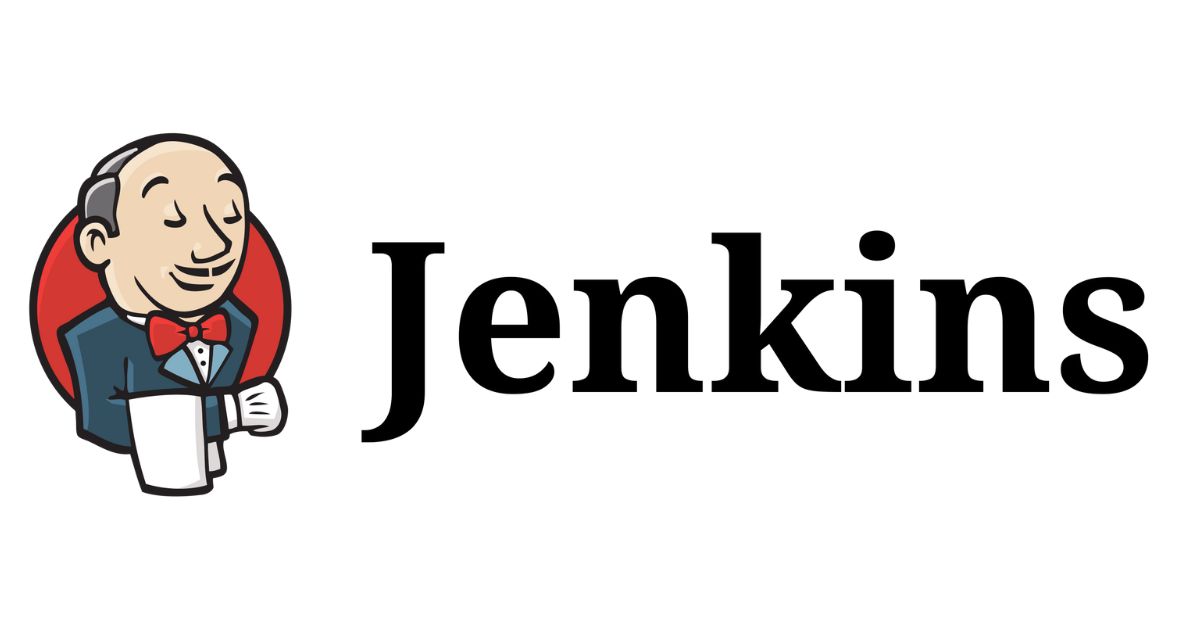Top 44 DevOps Interview Questions and Detail Answers
DevOps is a rapidly growing field that combines software development and IT operations to deliver software faster and more reliably. DevOps has become a cornerstone of efficient, reliable, and scalable operations.
This guide provides a curated list of the top DevOps interview questions, along with detailed answers, to help you navigate through the interview process confidently. Covering both fundamental and advanced topics, it aims to equip you with the insights necessary to demonstrate your proficiency in DevOps practices, tools, and methodologies.
Question 1. What is DevOps?

DevOps is a collaborative approach that aims to break down silos between software development and IT operations teams. It emphasizes automation, communication, and continuous delivery to improve the speed and quality of software deployment. DevOps aims to deliver software more quickly, reliably, and securely.
DevOps has become increasingly popular in recent years as organizations strive to deliver software faster and more efficiently. By adopting DevOps practices, teams can improve productivity, reduce costs, and enhance customer satisfaction.
Question 2. What are the key benefits of DevOps?
DevOps’s key benefits to organizations:
Faster delivery of software
Improved collaboration and communication
Better scalability and stability
Early defect detection
Automation of repetitive tasks
Question 3. How is DevOps different from Agile?
Key differences between DevOps and Agile:
Focus: Agile develops processes, while DevOps encompasses both development and operations.
Scope: Agile primarily specifies the development team. DevOps involves the entire software delivery lifecycle.
Automation: DevOps strongly emphasizes automation. Agile may incorporate automation, but it's not always a core principle.
Continuous delivery: DevOps prioritizes constant delivery of software. Agile may deliver working software at the end of each iteration.
In summary, Agile is a subset of DevOps. Agile practices are essential for successful DevOps implementations, but DevOps goes beyond Agile by focusing on the entire software delivery lifecycle and emphasizing automation.
Question 4. What is Continuous Integration (CI)?
Continuous Integration (CI) is a software development practice where developers frequently integrate or merge their code changes into a shared repository, usually several times a day. Each integration is then automatically verified by running automated tests and builds to detect any errors or conflicts early in the development process.
Question 5. What is Continuous Delivery (CD)?
Continuous Delivery (CD) is a software development practice in which code changes are automatically built, tested, and prepared for production release. It extends Continuous Integration (CI) by the code is in a deployable state at all times. While CI integrates code and runs tests frequently, CD automates the release process, enabling teams to deploy new features, bug fixes, or updates to production with minimal manual intervention.
Question 6. What are microservices, and how are they related to DevOps?
Microservices are an architectural approach to software development where an application is built as a collection of small, loosely coupled, independent services. Each service is designed to perform a specific function and communicates with other services over APIs. These services are independently deployable and managed, allowing for greater flexibility, scalability, and ease of maintenance.
DevOps practices are essential for effectively implementing and managing microservices architectures. Automation tools, continuous integration/continuous delivery (CI/CD) pipelines, and containerization technologies like Docker and Kubernetes are commonly used to deploy and manage microservices.
Question 7. What is the difference between monolithic and microservices architectures?
Monolithic Architecture is characterized by a single, unified application where all components are interconnected and managed together. It’s simpler to develop initially but can become challenging to scale and maintain as it grows.
Microservices Architecture breaks down an application into multiple, loosely coupled services that can be developed, deployed, and scaled independently. It has greater flexibility, scalability, and maintainability but introduces complexity in managing inter-service communication and deployments.
Question 8. What is Infrastructure as Code (IaC)?
Infrastructure as Code (IaC) is a practice that uses machine-readable files to define and manage infrastructure resources. You can automate these tasks using code instead of manually configuring servers, networks, and other infrastructure components.
Question 9. What is Configuration Management?
Configuration Management is a discipline in which IT systems' configuration remains consistent and controlled throughout their lifecycle. It includes managing changes to hardware, software, and firmware so systems operate as expected and meet defined requirements.
Question 10. What is Docker, and why is it important in DevOps?

Docker is a containerization platform that packages applications into lightweight containers, maintaining consistency across multiple environments (development, testing, and production).
A container is a standalone package that includes everything needed to run an application, such as the code, runtime, libraries, and dependencies. Containers are isolated from one another but can share the same operating system kernel, making them more efficient than traditional virtual machines.
Question 11. What is Kubernetes?
Kubernetes (often abbreviated as K8s) is an open-source container orchestration platform developed by Google. Its main function is to automate the deployment, scaling, and management of containerized applications. Kubernetes helps manage clusters of containers across different environments so applications are resilient, scalable, and maintain high availability.
Question 12. Explain the CI/CD pipeline.
A CI/CD pipeline (Continuous Integration/Continuous Delivery/Deployment pipeline) is an automated process that streamlines the software development lifecycle by facilitating the integration, testing, delivery, and deployment of code. It is effective for teams to deliver updates to software in a reliable, consistent, and automated way, making faster development cycles while improving software quality.
Question 13. What is the role of automation in DevOps?
Automation reduces human intervention for faster, more reliable software delivery. In a DevOps environment, automation is applied to various stages of the development, testing, deployment, and operations lifecycle, helping to achieve continuous integration, continuous delivery (CI/CD), and constant monitoring.
Question 14. What is the difference between Continuous Integration, Continuous Delivery, and Continuous Deployment?
CI is the foundation for CD and Continuous Deployment.
CI: Merging code regularly with automated tests.
CD (Delivery): Code is always ready for deployment, but manual intervention is required for production release.
CD (Deployment): Code is automatically deployed to production after passing tests.
Scope: CI on integration, CD on delivery, and Continuous Deployment on automatic deployment.
Automation: CD and Continuous Deployment require a higher level of automation than CI.
Risk: Continuous Deployment has a higher level of risk, as changes are automatically deployed to production without manual approval.
Question 15. What is Git, and how is it used in DevOps?
Git is a distributed version control system (DVCS) that tracks changes to files and directories over time. It is widely used in software development to manage source code and collaborate with other developers.
In DevOps, Git facilitates collaboration, enables code versioning, and integrates with CI/CD pipelines to streamline the development process.
Question 16. What is GitOps?
GitOps is a methodology for managing infrastructure and applications using Git as the single source of truth. It leverages Git's version control capabilities to define the desired state of the system and automatically reconcile any differences between the current state and the desired state.
Question 17. What is branching, and why is it important in DevOps?
Branching in version control systems like Git is a method of creating parallel versions of a project. Developers work on different features, bug fixes, or experiments independently from the main codebase. Each branch is a separate, isolated copy of the code that can be modified without affecting other branches or the primary codebase (often called the main or master branch).
In DevOps, branching is an important part of the development process. Teams work on multiple features simultaneously, experiment with different approaches, and manage the release process more effectively.
Question 18. What is a Pull Request (PR)?
In essence, a PR is a formal request for the changes in one branch (often a feature branch) to be reviewed and merged into another branch, typically the main or development branch.
PRs help code is thoroughly reviewed, tested, and approved before being integrated into the main branch, which is key to maintaining high code quality and stability in DevOps workflows.
Question 19. What are common CI/CD tools used in DevOps?
Here are some of the most common CI/CD tools used in DevOps:
Jenkins: A popular open-source CI server that can be customized to fit various needs.
GitLab CI/CD: A built-in CI/CD pipeline feature in GitLab, a popular Git hosting platform.
Travis CI: A cloud-based CI/CD platform that integrates with GitHub and Bitbucket.
Ansible: A configuration management tool that can be used to automate deployments.
Question 20. What is Jenkins, and how is it used in DevOps?

Jenkins is an open-source automation server that can be used to automate various tasks in the software development lifecycle from building to deploying applications. It's a popular choice for implementing continuous integration (CI) and continuous delivery (CD) pipelines.
How Jenkins is used in DevOps:
CI/CD pipelines: Jenkins can be used to create and manage CI/CD pipelines.
Integration with other tools: Jenkins can be integrated with a wide range of tools, including version control systems (Git, SVN), build tools (Maven, Gradle), testing frameworks (JUnit, TestNG), and deployment tools (Ansible, Puppet).
Automation of tasks: Jenkins can be used to automate various tasks, such as creating reports, sending notifications, and triggering other jobs.
Question 21. What are the different types of testing in a DevOps pipeline?
There are several types of testing that are commonly used in DevOps pipelines for the quality of software. Here are some of the most important ones:
Unit Testing: Testing individual components.
Integration Testing: Testing interaction between components.
Functional Testing: Testing functionalities of the application.
Performance Testing: Testing the application under load.
Security Testing: Identifying vulnerabilities.
Question 22. What is Selenium?
Selenium is a popular open-source framework for automating web browser interactions. It is primarily used for testing web applications across different browsers and platforms. With Selenium, you can write test scripts in various programming languages, including Java, Python, C#, and JavaScript, which simulate user interactions with a web browser, such as clicking buttons, entering text, and navigating pages.
Question 23. What is Ansible?
Ansible is an open-source configuration management tool used to automate the provisioning, configuration, and management of IT infrastructure. It uses a simple, human-readable language (YAML) to define the desired state of systems and then automates the process of configuring them to match that state.
It is often used in conjunction with other DevOps to create and manage complex infrastructure environments.
Question 24. What is Terraform?
Terraform is an open-source Infrastructure as Code (IaC) tool developed by HashiCorp. Users define, provision, and manage infrastructure using a declarative configuration language called HashiCorp Configuration Language (HCL). Teams describe cloud and on-premises infrastructure in code and automate creating, modifying, and managing that infrastructure.
Question 25. What are common monitoring tools in DevOps?
Some of the most popular monitoring tools used in DevOps:
Nagios open-source network and system monitoring tool.
Prometheus monitors a wide range of metrics.
Grafana creates dashboards and charts to visualize monitoring data.
Datadog application performance monitoring, infrastructure monitoring, and log management.
Question 26. What is Prometheus?
Prometheus is an open-source monitoring and alerting toolkit originally developed by SoundCloud in 2012. It collects metrics from different systems, stores them in a time-series database, and provides powerful querying capabilities for analysis and alerting. Prometheus is used in DevOps environments, particularly for monitoring cloud-native applications, containers, and microservices.
Question 27. What is Grafana?
Grafana is an open-source platform for monitoring, visualization, and alerting on time-series data from various sources. With the use of Grafana, users to create customizable, interactive dashboards to visualize metrics and data points in real-time. Grafana in DevOps environments for the purpose of observability, combining data from different sources such as Prometheus, InfluxDB, Elasticsearch, and many others into a single view.
Question 28. What is a Blue-Green Deployment?
Blue-Green Deployment is a release technique where two identical environments (blue and green) are used, with one live and the other idle. Once new changes are deployed to the idle environment, traffic is switched over to it, enabling zero-downtime releases.
Question 29. What is a Canary Deployment?
A Canary Deployment is a software release strategy where a new version of an application or service is gradually rolled out to a small subset of users before deploying it to the entire user base. The goal is to reduce risk by testing the new release in a real production environment with minimal impact in case issues arise.
Question 30. What is A/B Testing?
A/B testing, also known as split testing, is a method used to compare two or more variations of a web page, app feature, or marketing campaign to determine which one performs better. In an A/B test, users are randomly divided into different groups, each group being shown a different version of the content (Version A or Version B). Key performance metrics, such as click-through rate, conversion rate, or engagement, are tracked to measure the effectiveness of each version.
Question 31. What is a Load Balancer?
A load balancer is a device or software application that distributes incoming network or application traffic across multiple servers so that no single server becomes overwhelmed, thus improving the overall reliability and performance of the system. It manages server load, optimizes resource use, improves response times, and creates high availability by preventing overloading of any single server.
Question 32. What is Elasticity in DevOps?
Elasticity in DevOps is the ability of a system to scale up or down automatically to meet changing demand. It means that the system can dynamically adjust its resources (e.g., servers, storage) to handle increased or decreased workload.
Question 33. What is Scalability in DevOps?
We can see Scalability in DevOps when the ability of a system to handle increasing workloads without compromising performance. The system can adapt to changes in demand, whether it's an increase in traffic or a surge in data volume.
Question 34. What is an API Gateway?

An API gateway acts as a single entry point for clients to access a collection of microservices. It handles tasks like request routing, load balancing, authentication, authorization, and rate limiting, making it easier for clients to interact with the microservices architecture.
Question 35. What is a Service Mesh?
A Service Mesh is a dedicated infrastructure layer that manages service-to-service communication in microservices architectures. A service mesh decouples these communication concerns from the application logic for developers to perform business functionality while operations teams manage traffic, security, and performance more effectively.
Question 36. What is immutable infrastructure?
Immutable infrastructure means that once an infrastructure component is deployed (like a server), it is never modified. If changes are needed, a new instance is created with the updates, while the old instance is terminated.
Question 37. What is a Reverse Proxy?
A Reverse Proxy is a server that sits between client devices and backend servers, forwarding client requests to the appropriate backend server and returning the server’s response to the client. It acts as an intermediary that handles and manages requests from clients on behalf of the backend servers.
Question 38. What is Docker Compose?
By Docker Compose, you define and manage multi-container Docker applications using a simple configuration file called docker-compose.yml. Instead of starting multiple containers manually with individual docker run commands, Docker Compose has effectively defined all the services and their relationships (networks, volumes, dependencies) in one file and then managed them as a single unit.
Question 39. What is Kubectl?
Kubectl is the command-line interface (CLI) for Kubernetes. It supports you in interacting with Kubernetes clusters and managing various resources, such as pods, deployments, services, and more.
Question 40. What is a ReplicaSet in Kubernetes?
A ReplicaSet in Kubernetes is a controller object that maintains a specified number of replica pods for a given pod template. It has the function to maintain the desired number of pods are always running, even if some pods fail or are deleted.
Question 41. What is an EFK stack?
The EFK stack is a collection of three open-source tools - Elasticsearch, Fluentd, and Kibana - used together for log management, search, and visualization. It is a popular logging stack in DevOps environments, especially for Kubernetes clusters for centralized logging, real-time log analysis, and troubleshooting.
Question 42. What is DevSecOps?
DevSecOps stands for Development, Security, and Operations, and it integrates security into the DevOps process. When we use it, security is built into every stage of the software development lifecycle (SDLC), from planning and development to deployment and maintenance. The main goal of DevSecOps is to make security an integral part of the DevOps workflow based on applications that are secure by design and that security checks are automated.
Question 43. How can security be integrated into DevOps?
Security can be integrated by:
Automated security testing in CI/CD pipelines.
Code scanning for vulnerabilities.
Implementing role-based access control (RBAC).
Monitoring and auditing security events.
Question 44. What are the key challenges faced in DevOps implementation?
DevOps, while offering numerous benefits, also presents several challenges that organizations need to address for successful implementation.
Resistance to cultural change
Lack of collaboration between Dev and Ops teams
Legacy infrastructure
Complexity in toolchain integration
Security and compliance in automated pipelines
Conclusion
Preparing for a DevOps interview needs not only technical knowledge but also a clear understanding of how DevOps principles and tools work together. You should review the top DevOps interview questions and detailed answers provided in this guide. From that, you’ve taken a solid step toward demonstrating your expertise and readiness for a DevOps role.
To learn more about different aspects of DevOps, you can register for Skilltrans courses. Join us to gain the most updated knowledge from the world of technology.

Meet Hoang Duyen, an experienced SEO Specialist with a proven track record in driving organic growth and boosting online visibility. She has honed her skills in keyword research, on-page optimization, and technical SEO. Her expertise lies in crafting data-driven strategies that not only improve search engine rankings but also deliver tangible results for businesses.



